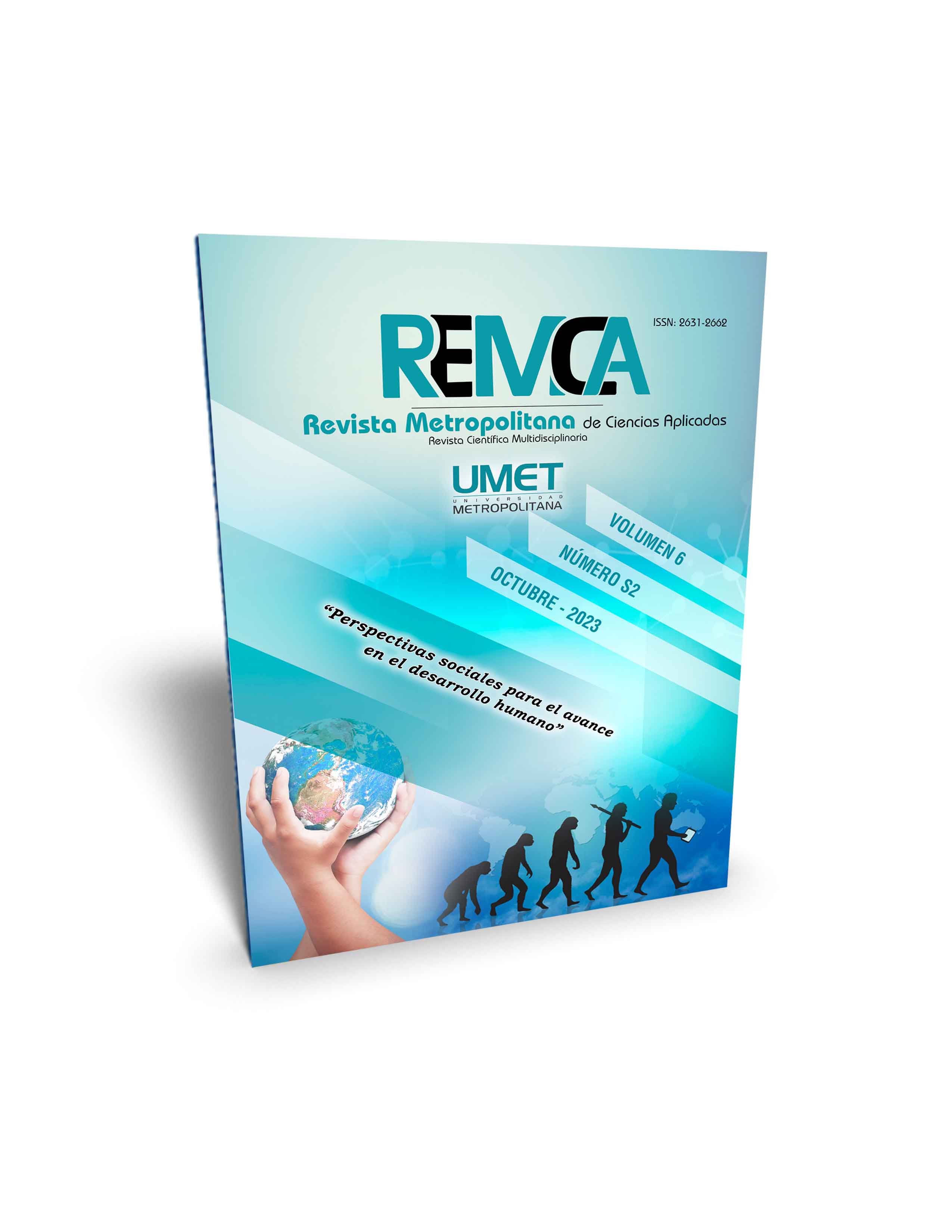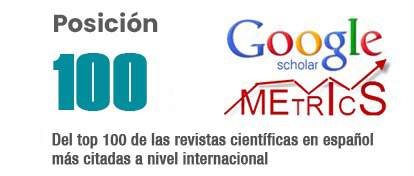Factores de riesgos psicosociales laborales en los trabajadores del gobierno autónomo descentralizado municipal del Cantón Yantzaza, de la provincia de Zamora Chinchipe
DOI:
https://doi.org/10.62452/n1fard60Palabras clave:
Riesgos psicosociales, estrés laboral, acoso laboral, salud laboralResumen
En la actualidad existe un sin número de factores que intervienen como riesgos psicosociales en el trabajo y las soluciones de los mismos es un tema debatible en toda institución pública como privada. Por ello, al existir un problema de riesgos psicosociales, produce una alta probabilidad de que el trabajador manifieste tensión; estrés laboral, trastornos, enfermedades y efectos en su capacidad para desempeñarse en el trabajo. En este sentido, la presente investigación tiene como objetivo principal determinar los factores de riesgos psicosociales (estrés laboral, acoso laboral y problemas de salud laboral) en los trabajadores del Gobierno Autónomo Descentralizado Municipal de Yantzaza (GADMY). Por lo que, la base de esta indagación planteo un enfoque cuantitativo con alcance descriptivo, los métodos utilizados fueron la recolección de datos mediante la encuesta para una muestra de 62 trabajadores. De manera que, los resultados permitieron confirmar la existencia de factores de riesgos psicosociales en el GADMY, y el riesgo psicosocial que más ha impactado es el estrés laboral. Para mitigar el problema, los departamentos competentes deben crear nuevas estrategias o soluciones para la mejora de la capacidad de funciones de cada empleado a través de condiciones óptimas de trabajo. Finalmente se concluye que, existe la presencia de fatores de riesgo psicosociales como: estrés laboral, acoso laboral y problema de salud.
Descargas
Referencias
Ahumada, M., Ansoleaga, E., & Castillo-Carniglia, A. (2021). Acoso laboral y salud mental en trabajadores chilenos: el papel del género. CSP: Cadernos de Saúde Pública, 37.
Argudo-García, A., Armas-Ortega, Y., Guillén-Alvarado, K., & Vergara-Romero, A. (2021). Una Revisión del Acoso Laboral y Estrategias de Prevención en las Organizaciones. (Ponencia). IX Congreso Internacional “Tecnología, Universidad y Sociedad”. Samborondón, Ecuador.
Atencio González, R. E., Pupo Kairuz, A. R., & Coronel Piloso, J. E. (2020). Acoso laboral como riesgo psicosocial en el marco laboral ecuatoriano. Uniandes Episteme. Revista De Ciencia, Tecnología E Innovación, 7, 1110–1122.
Ávila Urdaneta, J. G. (2020). El acoso laboral o mobbing como elemento causante de accidentes laborales. Revista Científica UISRAEL, 7(3), 115–128.
Benavides, F. G., Delclós, J., & Serra, C. (2019). Estado de bienestar y salud pública: el papel de la salud laboral. Gaceta Sanitaria, 32, 377-380.
Buitrago-Orjuela, L. A., Barrera-Verdugo, M. A., Plazas-Serrano, L. Y., & Chaparro-Penagos, C. (2021). Estrés laboral: una revisión de las principales causas consecuencias y estrategias de prevención. Revista Investigación en Salud Universidad de Boyacá, 8(2), 131-146.
Díaz Dávila, F., Guevara Villegas, S. E., & Vidaurre García, W. E. (2019). Estrés laboral y clima organizacional en colaboradores del Hospital Solidaridad, Chiclayo. UCV Hacer, 8(1), 31–40.
García Somoza, J., Marrero Santos, M., Pastor Arango, M., & Amores Agulla, T. (2020). Riesgos psicosociales laborales en anestesiólogos del municipio Arroyo Naranjo. Revista Cubana de Salud y Trabajo, 21(2
Karasek, R. (1979). Job demands, job decission latitude and mental strain: implications for job re-design. Admins Sci Q, 24, 285-308.
Karasek, R., & Theorell, T. (1990). Healthy work: Stress, Productivity, and the reconstruction of Working Life. Basic Books.
Lara, J., Gómez, A., & Peñafiel, Á. (2018). Guía para la aplicación del cuestionario de evaluación de riesgo psicosocial. Ministerio del Trabajo de Ecuador.
Luna-Chávez, E. A., Anaya-Velasco, A., & Ramírez-Lira, E. (2019). Diagnóstico de las percepciones de los factores de riesgo psicosociales en el trabajo del personal de una industria manufacturera. Estudos de Psicologia (Campinas), 36.
Martínez, L. M. (2020). Riesgos psicosociales y estrés laboral en tiempos de COVID-19: instrumentos para su evaluación. Revista de comunicación y salud, 10(2), 301-321.
Organización Mundial de la Salud. (2021). Casi 2 millones de personas mueren cada año por causas relacionadas con el trabajo. https://www.who.int/es/news/item/16-09-2021-whoilo-almost-2-million-people-die-from-work-related-causes-each-year
Osorio Vasco, J. (2021). Panorama de la seguridad y salud en el trabajo de microempresas colombianas ubicadas en un barrio del Municipio de Itagüí, Antioquia, Colombia. Cadernos de Saúde Pública, 37.
Patlán-Pérez, J. (2019). Efecto de los riesgos psicosociales en la satisfacción laboral y los trastornos psicosomáticos en trabajadores del sector público. RECAI Revista de estudios en Contaduría, Administración e informática, 8(21), 20-47.
Pinos Mora, L. P. (2018). Factores psicosociales en la gestión de riesgo laboral. Revista de Ciencias de Seguridad y Defensa, 2(1), 26-26.
Quiroz-Rubiano, M. M. (2022). Nuevas formas y retos laborales: teletrabajo, trabajo remoto y trabajo en casa. Catálogo Editorial, 1(247), 1–262.
Rojas-Lázaro, M. Y., Velandia-Ortiz, Y. E., Angarita-Soto, J. J., Rivera-Porras, D., & Carrillo-Sierra, S. M. (2019). Relación entre hábitos de vida saludable y satisfacción laboral como elementos favorecedores en la salud laboral. Archivos Venezolanos de Farmacologia y Terapeutica 38.
Rosander, M., & Blomberg, S. (2019). Levels of workplace bullying and escalation– a new conceptual model based on cut-off scores, frequency and self-labelled victimization. European Journal of Work and Organizational Psychology, 28(6), 769-783.
Rubio-Ávila, S. M., & Gómez-Sánchez, R. V. (2018). Factores psicosociales en el trabajo. Revista Colombiana de Salud Ocupacional, 8(2), 5427-5427.
Sabastizagal-Vela, I., Astete-Cornejo, J., & Benavides, F. G. (2020). Condiciones de trabajo, seguridad y salud en la población económicamente activa y ocupada en áreas urbanas del Perú. Revista peruana de medicina experimental y Salud Pública, 37, 32-41.
Seijas-Solano, D. E. (2020). Riesgos psicosociales, estrés laboral y síndrome burnout en trabajadores universitarios de una escuela de bioanálisis. Revista de Salud Pública, 21, 102-108.
Sierra Hernáiz, E. (2021). Delimitación del concepto de riesgo psicosocial en el trabajo. Foro: Revista de Derecho, (35), 8-27.
Uribe Bustos, N. (2018). Análisis de instrumentos de prevención en riesgo psicosocial laboral en Chile y Perú. Universidad Nacional Andrés Bello.
Uribe, J. F. (2020). Riesgos psicosociales, burnout y psicosomáticos en trabajadores del sector público. Investigación Administrativa, 49(125).
Wilsoft. (2019). Orígenes e historia del riesgo psicosocial. https://wilsoft-la.com/origenes-e-historia-del-riesgo-psicosocial/
Descargas
Publicado
Número
Sección
Licencia
Derechos de autor 2023 Elsa Consuelo Acaro-Moreno, Edwin Joselito Vásquez-Erazo, Blanca de los Ángeles Herrera-Hugo (Autor/a)

Esta obra está bajo una licencia internacional Creative Commons Atribución-NoComercial-CompartirIgual 4.0.
Los autores que publican en la Revista Metropolitana de Ciencias Aplicadas (REMCA), están de acuerdo con los siguientes términos:
1. Derechos de Autor
Los autores conservan los derechos de autor sobre sus trabajos sin restricciones. Los autores otorgan a la revista el derecho de primera publicación. Para ello, ceden a la revista, de forma no exclusiva, los derechos de explotación (reproducción, distribución, comunicación pública y transformación). Los autores pueden establecer otros acuerdos adicionales para la distribución no exclusiva de la versión de la obra publicada en la revista, siempre que exista un reconocimiento de su publicación inicial en esta revista.
© Los autores.
2. Licencia
Los trabajos se publican en la revista bajo la licencia de Atribución-NoComercial-CompartirIgual 4.0 Internacional de Creative Commons (CC BY-NC-SA 4.0). Los términos se pueden consultar en: https://creativecommons.org/licenses/by-nc-sa/4.0/deed.es
Esta licencia permite:
- Compartir: copiar y redistribuir el material en cualquier medio o formato.
- Adaptar: remezclar, transformar y crear a partir del material.
Bajo los siguientes términos:
- Atribución: ha de reconocer la autoría de manera apropiada, proporcionar un enlace a la licencia e indicar si se ha hecho algún cambio. Puede hacerlo de cualquier manera razonable, pero no de forma tal que sugiera que el licenciador le da soporte o patrocina el uso que se hace.
- NoComercial: no puede utilizar el material para finalidades comerciales.
- CompartirIgual: si remezcla, transforma o crea a partir del material, debe difundir su creación con la misma licencia que la obra original.
No hay restricciones adicionales. No puede aplicar términos legales ni medidas tecnológicas que restrinjan legalmente a otros hacer cualquier cosa que la licencia permita.




